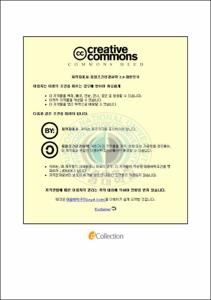황다랑어껍질 젤라틴으로 제조한 필름의 물리적 특성
- Alternative Title
- Physical Characteristics of Gelatin Film Manufactured from the Skin of Yellowfin Tuna (Thunnus albacares)
- Abstract
- Gelatin, which is a protein derived from collagen have been widespread used in food, medicine and photographic industries over the years. However, gelatins from mammalian resources are limited in utility of processing in functional food, cosmetic, and pharmaceutical products because frequent occurrences of bovine spongiform encephalopathy (BSE) and foot/mouth diseases are to be serious problems for human health.
In this study, we tried to investigate physical characteristics of the gelatin film from yellowfin tuna skin in order to develop edible flim from fish by-products for the replacement of mammalian resources.
In order to analyze the physical characteristic of the film, the tensile strength, elongation, color value, opacity value, water solubility, swelling property, water vapor permeability, oxygen permeability and thermal properties (DSC, TGA/DTA) were investigated. In case of tensile strength and elongation, those of the tuna gelatin film was 499.7 kgf/㎠ and 15.1%, respectively, and the tuna gelatin/chitosan mixed film was 463.1 kgf/㎠ and 7.6%, respectively. The physical characteristics of both gelatin were superior than porcine gelatin film (461.3 kgf/㎠ and 9.6%). In Hunter color values, the ℃E and YI value of tuna gelatin film was 11-folds and 36-folds higher than porcine gelatin film. The opacity value of tuna gelatin film was higher than other films. The solubility of tuna gelatin film and the tuna gelatin/chitosan mixed film were most stable at pH 4 to pH 7. The swelling property of tuna gelatin film was the lowest at pH 5, though the porcine gelatin film showed the lower value of swelling property in ranging pH 7 to pH 9. Water vapor permeability and oxygen permeability of tuna gelatin film was 5.3 cm³/㎡·day and 110 g/㎡·day, respectively, and those of the tuna gelatin/chitosan mixed film was 1.8 cm³/㎡·day, and 58 g/㎡·day, respectively. While water vapor permeability and oxygen permeability of porcine gelatin film was 7.4 cm³/㎡·day and 170 g/㎡·day, respectively.
The glass transition temperature of the film by differential scanning calorimetry (DSC) was 54.24℃ in porcine gelatin film, 56.30℃ in tuna gelatin film and 50.30℃ in the tuna gelatin/chitosan mixed film, respectively. Thermal stability of the film by thermogravimetric analysis (TGA) was about 270℃ in porcine gelatin film, about 260℃ in tuna gelatin film and about 250℃ in the tuna gelatin/chitosan mixed film. Thermal decomposition temperature of the film by differential thermal analysis (DTA) was about 290℃ in porcine gelatin film, about 300℃ in tuna gelatin film and about 230℃ in the tuna gelatin/chitosan mixed film.
- Issued Date
- 2008
- Awarded Date
- 2008. 2
- Type
- Dissertation
- Publisher
- 부경대학교 대학원
- Alternative Author(s)
- Jung, Cheol-Kyun
- Affiliation
- 부경대학교 대학원
- Department
- 대학원 식품공학과
- Advisor
- 김선봉
- Table Of Contents
- 서론 = 1
재료 및 방법 = 4
1. 실험재료 = 4
2. 실험방법 = 4
2.1 필름의 제조 = 4
2.2 필름 두께 = 5
2.3 인장 강도 및 신장률 = 5
2.4 수분 안정성 = 5
2.5 팽윤도 = 6
2.6 색도 = 7
2.7 불투명도 = 7
2.8 투습도 = 8
2.9 산소투과도 = 8
2.10 Differential scanning calorimetry = 8
2.11 Thermogravimetric analysis Differential thermal analysis = 9
2.12 통계분석 = 9
결과 및 고찰 = 10
3.1 필름의 인장강도 및 신장률 변화 = 10
3.2 필름의 수분 안정성 = 16
3.3 평윤도 = 19
3.4 색도 = 21
3.5 불투명도 = 21
3.6 투습도 = 24
3.7 산소투과도 = 26
3.8 필름의 열적 특성 변화 = 26
3.8.1 유리전이온도 변화 = 26
3.8.2 열중량 변화 = 29
3.8.3 열분해도 변화 = 29
요약 = 33
참고문헌 = 36
감사의 글 = 43
- Degree
- Master
- Files in This Item:
-
-
Download
 황다랑어껍질 젤라틴으로 제조한 필름의 물리적 특성.pdf
기타 데이터 / 805.68 kB / Adobe PDF
황다랑어껍질 젤라틴으로 제조한 필름의 물리적 특성.pdf
기타 데이터 / 805.68 kB / Adobe PDF
-
Items in Repository are protected by copyright, with all rights reserved, unless otherwise indicated.